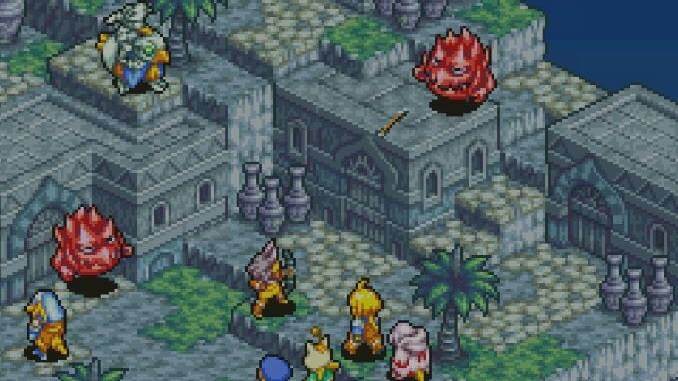20 Years Ago Final Fantasy Tactics Advance Introduced the Tactical RPG to Younger Players

At this point Final Fantasy is its own small medium. There are almost as many varied takes on what a Final Fantasy game can be as there are people who’ve worked on the series in its three decades of history. And for many players, out of that beautiful spectrum, Final Fantasy Tactics and its successors reach the closest for perfection. The Game Boy Advance spinoff Final Fantasy Tactics Advance never achieved the cult favorite status enjoyed by its big brother, but for a game turning 20 this month it still boasts some smart changes to the formula that hold up better than Tactics.
Not everybody began with the original. I was able to get my hands on a copy of Advance and a GBA much earlier than the first Tactics, which debuted on the original PlayStation. It was only a few years later that Square made the first game more widely available so that it could burrow its way under my skin forever. But getting to Advance first meant that the spin-off itself would shape a lot of my tastes around strategy RPG’s going forward.
First things first, the Tactics mold is absolutely the best implementation of Final Fantasy’s job system to this day. It’s my favorite set of growth mechanics in any game anywhere. Every unit has a primary job that doles out stat growths and abilities accordingly. Once they switch jobs they carry their stats and active/passive abilities forward into their next one. This means with a little bit of planning and job blending, each unit of your army blooms into a satisfying exercise in player expression.
Starting a unit off as a monk to boost her physical attack before pivoting into a dual wielding ninja that punches guys to death twice as fast is glorious. Likewise, a samurai who’s spent time leveling as a black mage beforehand hits like a truck with their high magic stat and the magic boosting passive abilities they’ve learned. Not every job combination works, but even messing up a character in these games is more fun than it has any right to be. And some broken jobs from the original game like the Calculator are missing or replaced by jobs that don’t always live up to their old counterparts, but Advance’s inclusion of four non-human unit types including moogle knights is a cool wrinkle that wasn’t present in its predecessor, and that expands on the world’s unique fantasy setting. While I don’t love all of the changes and omissions made to the job list in Tactics Advance, I’m still fond of the other big swings the game took.
With this handheld entry the low fantasy adventure of Tactics gave way to a more friendly high fantasy story of neighborhood kids displaced in a strange world. Where Tactics takes cues from the cold logic of works like Game of Thrones and Berserk in its story and localization, Advance is warm like Narnia or The Neverending Story.
Tactics tells the story of the bastard son of a great house and his commoner best friend eager to prove themselves, while Advance is centered on a constantly bullied kid dealing with his parents’ divorce. The characterization and political intrigue just isn’t here like in Tactics proper, but the kid-oriented story it aims to tell is well executed until its conclusion. There was clearly an effort to simplify the game’s setting and story for what would ostensibly be a younger audience, but just as much attention was paid to loyally translating the strategic experience of the original game onto a smaller screen.
